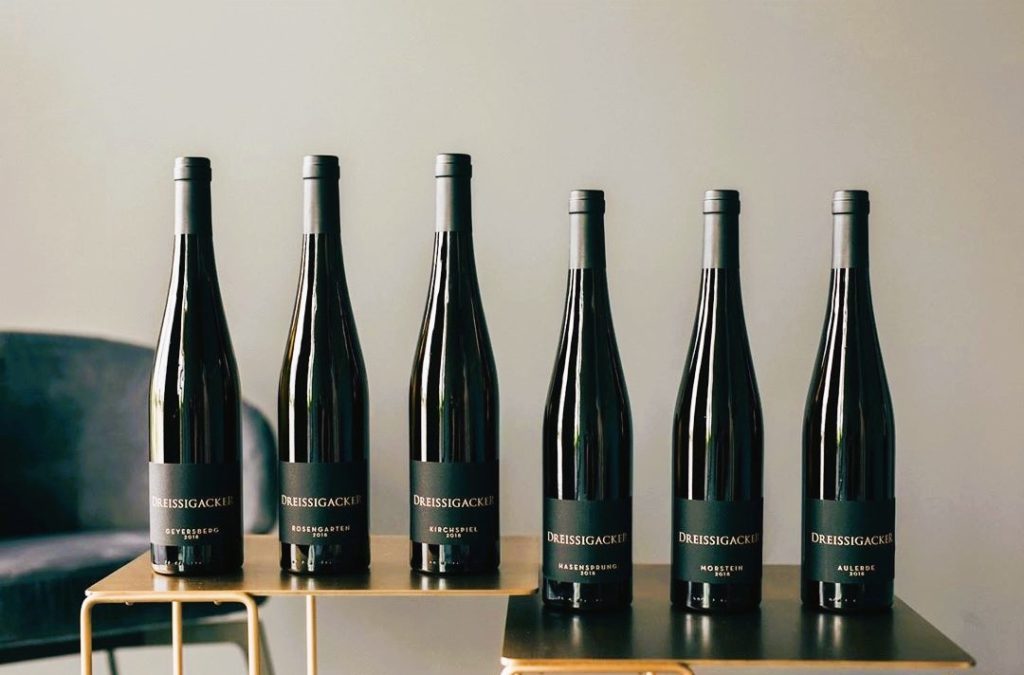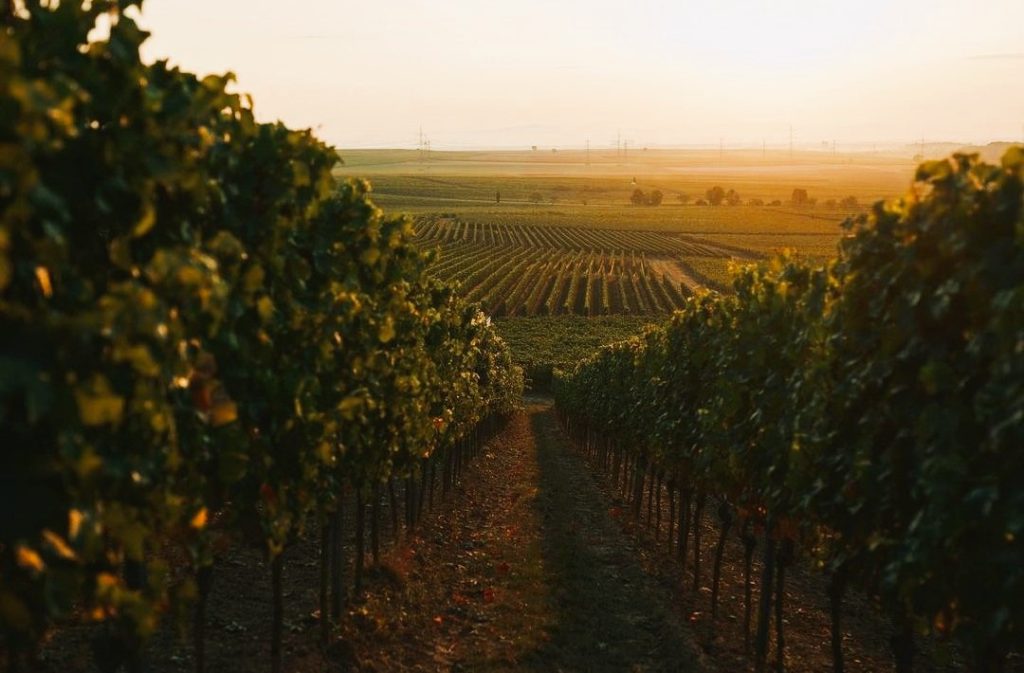For this month’s blog, I’m going to discuss/confess my love for Riesling. Apart from it being my favourite grape, Riesling is also a highly versatile white grape variety that originated along the Rhine river in the cool climate of Germany where it has been documented as having been used to make wines from at least 1435!
Known for its aromatic, floral, and fruity character, Riesling produces an array of different wines; from sparkling (more known as Sekt in Germany,) bone dry to lusciously sweet wine, making it suitable for a wide variety of palates and food pairings.

In the Vineyard
One of the dangers of cool climates is spring frosts. These frosts can damage the young buds of the vine and severely affect quality and yields (the amount of grapes grown) for both the current and the following year.
Luckily, Riesling buds late, meaning that the threat of these frosts is minimised, and Riesling can then ripen in the sunny German summer where it develops its distinctive aromatic and perfumed notes. Riesling is also relatively tolerant of very cold winter temperatures, making it suitable for the harsh winters experienced in the cool climates it is grown. It is also thought to be more resilient against winter freeze than other grapes.
Despite this, Riesling is susceptible to grey mold, anthracnose and grape berry moths. In some conditions, grey mold infestations on stalks can lead to berries falling off before full ripening.

In the Winery
Riesling, unlike other varieties, such as Chardonnay, retains its high zesty acidity long into the growing season. This allows it to develop the depth and complexity which makes this wine so unique. In Germany, the growing season can extend into late summer or even autumn.
This long season gives winemakers the choice of when to harvest their grapes based on the style that they want to produce. As these grapes ripen, winemakers must consider two things: flavours and sugars.
First, as these grapes ripen, they develop from floral (white blossom) and citrus fruit notes (lemon and lime) to stone fruits (peach and nectarine) to eventually ripe tropical notes (pineapple and mango). The later a winemaker harvests the more towards the tropical style the wine will be.
Second, as a grape ripens it accumulates sugar. In winemaking, during fermentation, yeast eat the sugar and transform it into alcohol. If a winemaker makes a dry wine, all the sugars in the grapes are transformed into alcohol; therefore, the more sugars in the grapes, the more potential alcohol a wine can have. However, with this variety, winemakers can choose to stop the fermentation meaning that not all of the sugars have been converted into alcohol. The resulting wine is low in alcohol (usually under 10% abv) and is sweet.
Acidity vs Sweetness
This perception of sweetness and acidity isn’t just related to the level of acidity, but to the balance of acidity and any residual sugar. For example, some German Rieslings taste dry despite having significant levels of residual sugar (up to around 9 g/l) because of the elevated level of acidity, which provides a refreshing crispness and balance to its flavours.
It’s a special grape for me personally as most wines made from Riesling are always made without any oak impact. So what you smell and taste in your glass is purely coming from the grapes themselves. For this reason, Riesling is considered as one of the best grapes for expressing the sense of place that it’s coming from (what the French refer to as terroir.)

Growing Regions
Germany – The most renowned region for Riesling, particularly the Mosel, Rheingau, and Rheinhessen areas. German Rieslings are often known for their precise balance of sweetness and acidity.
France – In Alsace, Riesling tends to be dry and full-bodied with a pronounced minerality.
Austria – Known for producing high-quality, dry Rieslings.
Australia – Particularly in the Clare and Eden Valleys, Rieslings here are typically dry with intense citrus and floral notes.
USA – In regions like Washington State and California, Riesling can range from dry to sweet, often with bright fruit and floral characteristics.
Aging Potential
Rieslings, particularly those from premium regions and with higher acidity, can age gracefully. As they age, they develop complex secondary aromas and flavors, including honey, petrol, and dried fruit. Many people may think Riesling is a bulk sweet uninteresting wine that can be found on the bottom shelves of supermarkets. But this could not be further from the truth.

